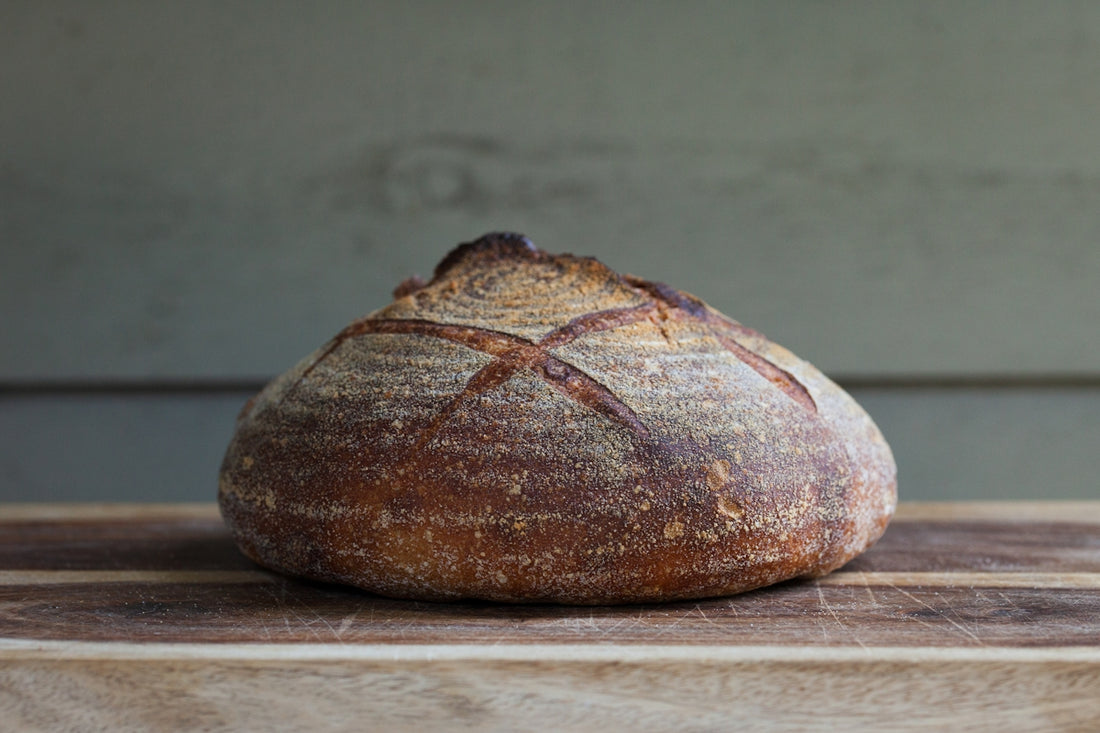
Best Practices on How to Store Sourdough Starter Safely and Effectively
As many sourdough baking enthusiasts might agree, nurturing a sourdough starter can be as rewarding as it is intricate. This ancient method of bread-making is enjoying a resurgence, inviting home bakers into the delicate and delightful world of wild yeast fermentation. If you're on the journey of homemade sourdough, understanding how to store your sourdough starter effectively is crucial. Not only does proper storage enhance the flavor and quality of your sourdough bread, but it also ensures that your starter remains active and healthy. In this comprehensive guide, we'll delve into best practices for storing a sourdough starter, explore the benefits of sourdough fermentation, and connect various aspects of sourdough baking life.
Understanding Sourdough Starter
A sourdough starter is essentially a community of wild yeast and lactic acid bacteria living symbiotically. This natural fermentation culture is the foundation of any sourdough bread recipe. Unlike store-bought yeast, which offers a predictable and rapid rise, sourdough starter provides unique flavors and a digestible texture, enhanced by a longer fermentation process.
The Science of Sourdough Fermentation
Sourdough fermentation is not just an ancient art but a science. The wild yeast and bacteria ferment the carbohydrates in flour, producing carbon dioxide, which helps the dough rise. The lactic acid bacteria also produce lactic and acetic acids, which contribute to the distinctive sour flavor and a longer shelf-life for sourdough bread. For those interested in diving deeper into artisan bread baking, understanding the nuances of wild yeast fermentation can help elevate your sourdough baking skills.
Why Proper Storage is Important
Before we explore how to store sourdough starter, let’s discuss why it's essential. Improper storage can lead to issues such as mold, diminished activity, and undesirable flavors. These challenges can derail your efforts to create easy sourdough bread, leaving you with a starter that may need heavy troubleshooting to revive.
Benefits of Effective Storage
- Consistent Activity: By maintaining a stable environment, your starter remains vigorous and ready for action when baking opportunities arise.
- Reduced Spoilage: Proper storage techniques guard against spoilage and contamination, ensuring your starter’s longevity.
- Enhanced Flavor: A well-maintained starter can develop deeper, more complex flavors over time, distinguishing your homemade sourdough from regular bread.
Best Practices for Storing Sourdough Starter
Immediate Use Storage
If you're baking sourdough bread frequently, storing your starter at room temperature is ideal. Follow these guidelines:
- Feeding Schedule: Feed your sourdough starter daily to keep it active. A simple maintenance schedule includes discarding half and feeding it with equal parts water and flour. Check out the Sourdough Starter Kit for essential tools to streamline this process.
- Storage Container: Use a glass, ceramic, or food-grade plastic container with a loose-fitting lid. This allows gases to escape while protecting the starter from contaminants.
Long-term Storage
If you bake less frequently or need to pause your sourdough activity (like during vacations), refrigerating your starter is a viable option.
- Feeding Frequency: Unlike room temperature storage, refrigerated starters can go up to a week without feeding. Before refrigerating, feed your starter a bit more than usual to ensure it has plenty of food.
- Reactivation: Plan to feed it a few times at room temperature to reactivate it before baking. This ensures your organic sourdough starter is as lively as ever when you need it.
Freezing a Sourdough Starter
For very long-term storage, freezing is an option, though not ideal for maintaining the starter's quality.
- Preparation: Before freezing, feed and let it bubble actively. Spread a thin layer on parchment paper and let it dry. Once completely dry, break it into pieces and store it in an airtight container in the freezer.
- Reactivation: When needed, rehydrate the dried starter pieces with a bit of water and continue with a regular feeding schedule.
Common Sourdough Starter Troubleshooting
Even with the best care, issues might arise. Here's how to handle some common problems:
- Hooch Formation: A layer of liquid, or "hooch," atop your starter indicates hunger. It's usually harmless—just stir it back in or pour it off and feed your starter.
- Mold: If you notice mold, it's best to start fresh. Proper hygiene and regular feedings should prevent mold from developing.
- Lack of Activity: A starter not bubbling or rising can be sluggish due to inadequate feeding. Boost its vitality by feeding it several times at room temperature.
Integrating Sourdough into Daily Baking Life
Crafting with Discard
Using sourdough discard can prevent waste and enrich your culinary creations. Try incorporating it into your favorite recipes like sourdough pizza dough or sourdough bagels. For a smooth dough-making process, consider using Nonna’s Pizza Dough Docker for optimal texture.
Sourdough and Health
Sourdough is celebrated not just for its flavor, but also its health benefits. The long fermentation process helps break down gluten, making it easier to digest and potentially suitable for some with gluten sensitivities. It also has a lower glycemic index, making sourdough bread a possible choice for diabetics.
Tools of the Trade
Equipping your kitchen with the right tools can make the sourdough journey more rewarding. Whether you’re dreaming of baking an Italian sourdough bread masterpiece or experimenting with sourdough scoring techniques, having a 5.5 Quart Red Le Creuset Dutch Oven can enhance your baking endeavors.
Continuing the Sourdough Adventure
As you grow in your sourdough baking skills, remember that the journey is just as valuable as the destination. Whether you’re on the quest to achieve a crispy sourdough crust or exploring sourdough starter vs yeast debates, delight in the small victories and lessons learned.
For further insights, products, and recipes, visit Italian Sourdough. Here, you can find a community of like-minded bakers and resources to enrich Your sourdough life. Embrace the traditions of sourdough and let them inspire your culinary journey.
Happy baking!
